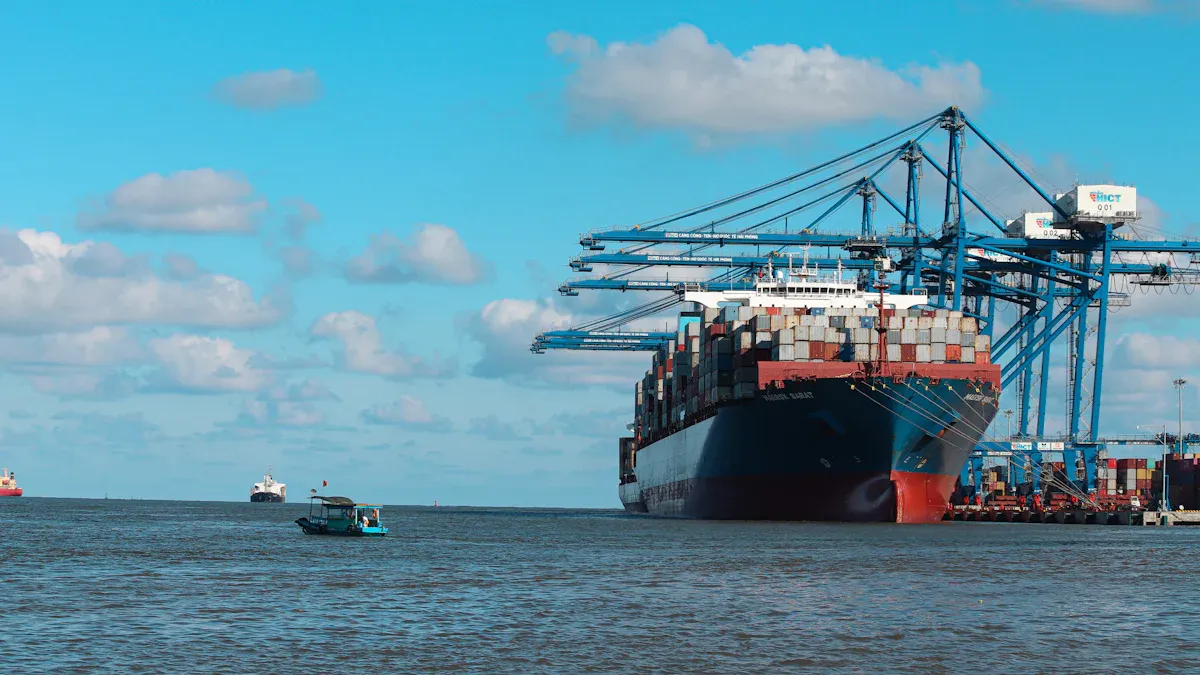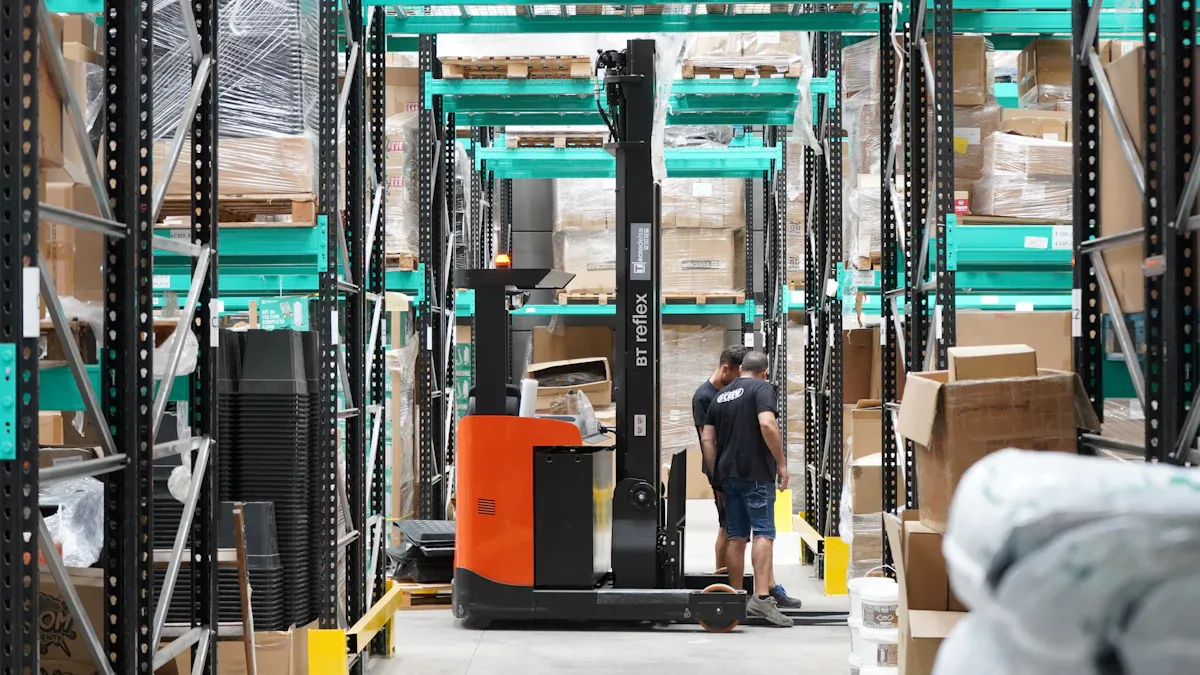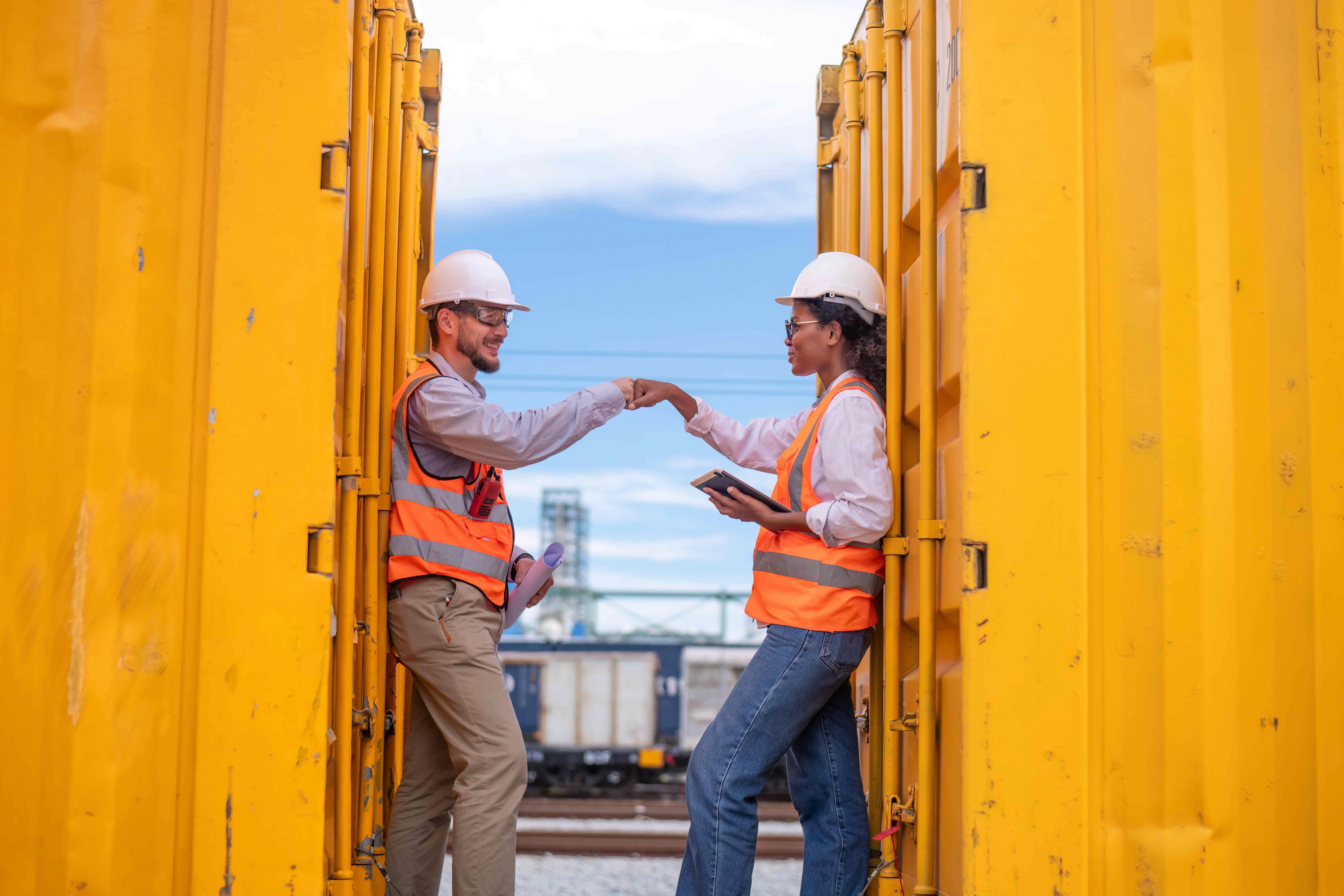5 Best Practices for Cross-Border Logistics Success in 2025

Cross-border logistics in 2025 needs quick action and new ideas. Companies that follow best practices have fewer delays. They also work better. They use technology to watch shipments. They use it to automate customs. They use it to handle compliance. The table below shows what cross-border logistics and global trade look like now:
Aspect | Details |
|---|---|
Market Valuation | $1.5 trillion |
Projected CAGR | 8% |
Key Challenges | Geopolitical instability, fuel costs, regulations, supply disruptions |
Emerging Trends | AI, automation, blockchain, sustainable logistics |
A trusted logistics provider like JUSDA helps businesses change fast. They use advanced solutions to solve cross-border problems. This helps companies stay ahead in global trade.
Key Takeaways
Use smart technology like AI and automation to make customs faster. These tools help reduce mistakes. They also help save money in cross-border shipping.
Combine different transport methods like rail, road, air, and sea. This helps you be more flexible. It can also lower costs. It is better for the environment too.
Keep shipments on track with real-time tracking. Work with strong local partners to follow rules. This helps you avoid delays.
Digital Customs Automation

AI in Cross-Border Logistics
JUSDA uses smart AI and automation to make customs easier. Their Supply Chain Management Collaboration Platform does customs paperwork by itself. It sorts goods and tracks shipments as they move. This platform cuts down on manual work. It helps get approvals faster. Companies make fewer mistakes and ship things quicker.
AI tools now do up to 80% of the boring customs jobs. Dashboards show where each shipment is right now. Teams can fix problems before they slow things down. AI picks the right Harmonized System codes. This helps avoid fines and stops.
Impact Metric | Measurable Outcome |
|---|---|
Reduction in customs clearance times | |
Automation of customs paperwork | Over 80% done by machines |
Invoicing processing time | Cut from 10 minutes to 5 seconds |
Error and document hold rates | Big drop in mistakes |
Cost savings | Over $3.2 million saved in one year |
JUSDA’s platform helped a big electronics company clear customs in half the time. The company moved workers from paperwork to helping customers. This made things faster and made customers happier.
Compliance Tools
Good compliance tools are important for cross-border success. JUSDA’s platform has automated customs forms, HS code search, and duty calculators. These tools help pick the right product codes and give quick cost estimates. Real-time tracking shows where shipments are, even during customs checks.
Companies can do these steps for better compliance:
Use automated forms to make fewer mistakes.
Connect compliance tools with ERP and shipping systems.
Watch real-time dashboards for updates on shipments and customs.
These steps help stop delays, avoid fines, and make cross-border work smoother. JUSDA’s solutions let companies spend more time growing and less time on paperwork.
Multi-Modal Supply Chains

Rail and Land Solutions
Strong multi-modal supply chains are very important for cross-border work. Companies move goods using rail, road, air, and sea. This mix gives them more choices and helps when things go wrong. Multi-modal transport operators handle shipments with one contract. This makes paperwork and following rules easier. They use real-time tracking to make things run better and keep customers happy.
Multi-modal supply chains help companies change plans fast. They also save money and lower risks.
Description | Industry Example(s) | |
|---|---|---|
Enhanced Flexibility & Reliability | Lets companies use different routes and better schedules. This helps avoid problems and deliver on time. | DHL uses multi-modal transport to deal with tough situations. |
Cost Efficiency | Saves money by picking the cheapest way to ship. It also uses less fuel and saves more as they ship more. | Amazon uses air, sea, and ground to save money and stay fast. |
Reduced Environmental Impact | Uses greener ways like rail and sea to cut pollution. This helps companies meet green goals. | Maersk ships and uses rail to help the planet. |
Improved Risk Management | Uses many ways to ship so they do not depend on just one. This helps stop big problems in the supply chain. | Apple uses multi-modal shipping to deliver on time around the world. |
Rail and road are very important for cross-border trucking. Rail is cheap for long trips and big loads. It is also reliable and saves energy. Road transport brings goods right to your door. It is good for the last part of delivery. Using both helps companies save money, go faster, and trust their shipments will arrive.
JUSDA’s China-Europe Express Rail
JUSDA’s China-Europe Express Rail is a top cross-border trucking service. It links over 30 cities in China with more than 80 in Europe. Goods arrive in 15–20 days. This is much faster than sea freight. It also costs less than air freight. The rail line moves many things like electronics, clothes, and medical supplies.
The China-Europe Express Rail has many good points:
It is faster than sea freight.
It makes less pollution than air freight.
It is on time and does not have many delays.
It is a good choice for companies that want to ship across borders.
JUSDA knows a lot about cross-border trucking and freight. They help clients avoid problems and deliver better. Their way of working makes customs easy and gives updates right away. This makes cross-border shipping simple.
End-to-End Visibility
Real-Time Tracking
Real-time tracking is very important in cross-border logistics. JUSDA’s JusLink platform uses IoT sensors and big data. These tools help companies see where every shipment is. Teams get updates on location, temperature, and condition as goods move. This helps them find delays, theft, or damage early. They can fix problems quickly.
Real-time tracking helps more shipments arrive on time. It can make on-time deliveries better by up to 25%. It also lowers cargo loss by 20%. Companies can change routes if there is traffic or bad weather. This keeps shipments moving on schedule.
To see the whole supply chain, companies can do these steps: 1. Put IoT devices on shipments for live updates. 2. Connect rail, road, air, and sea into one platform. 3. Use cloud dashboards to watch shipments and inventory. 4. Set alerts for customs delays or route changes. 5. Work with cross-border partners to share data easily.
Metric | Impact Range | Description |
|---|---|---|
Transit time reduction | Shipments move faster with track and trace solutions. | |
Customs delay reduction | 10-15% | Better visibility means fewer border holdups. |
On-time delivery improvement | 6-8% | More shipments get to customers as promised. |
JusLink Platform
JusLink is a strong tool for cross-border logistics. It uses RFID, warehouse management, and predictive analytics. The platform lets teams see shipments from start to finish. It also helps manage inventory as it moves. Real-time teamwork helps everyone in the supply chain work together. One electronics company used JusLink to track shipments from China to Europe. They had fewer customs delays and better delivery times. This made their customers happier.
Regulatory Intelligence
Cross-Border Compliance
In 2025, new rules make cross-border work harder. Companies must follow stricter customs checks and label products better. There are also new carbon emission rules. Customs now use AI to check documents and HS codes. They want the right country-of-origin details. Trade agreements change a lot, and new tariffs can start fast. Data privacy laws affect how companies use shipment data.
To follow the rules, companies should:
Use AI tools to check documents and HS codes.
Make customs paperwork digital with blockchain and EDI.
Teach teams about new labeling and document rules.
Get help from customs brokers for expert advice.
Add extra time to shipping plans for delays.
A trusted logistics provider like JUSDA helps clients keep up. JUSDA’s experts watch for new rules and tell clients what to do. Their digital tools help with compliance and cut down on mistakes. This support keeps cross-border trucking and freight moving well.
Local Partnerships
Local partnerships are very important for cross-border success. Customs brokers, 3PLs, and local experts help with changing rules. These partners know local laws, taxes, and customs steps. They also speak the local language, so there is less confusion.
Local teams fix problems fast and keep shipments going. They give advice about customs, tariffs, and trade deals.
Best ways to build strong partnerships are:
Pick partners who know the local area well.
Make sure everyone knows their job.
Use tech for real-time tracking and sharing data.
Always talk openly with partners.
Check processes often to make sure rules are followed.
JUSDA’s local partners help cross-border trucking avoid delays and follow all the rules.
Sustainable Best Practices
Green Logistics
Sustainability is very important in cross-border logistics in 2025. Many companies see that people want eco-friendly shipping. More than half of US shoppers will pay extra for green delivery. Almost three out of four shoppers worldwide like sustainable products. The green logistics market could reach $1.91 trillion by 2029. New rules, like the Carbon Border Adjustment Mechanism, make companies use greener ways.
JUSDA is a leader in green logistics. They help clients lower emissions and follow new rules. They use the China-Europe Express Rail to cut carbon emissions by about 30%. This is better than air or sea freight. JUSDA also uses electric vehicles, reusable packaging, and smart warehouses. Clients can do these things to be more sustainable:
Pick rail or intermodal transport for cross-border shipping.
Use packaging that can break down or be used again.
Work with partners who use low-emission vehicles.
Green logistics helps the planet. It also makes customers trust brands more and meets what customers want.
Efficiency Initiatives
Efficiency helps save money and protect the planet in cross-border logistics. JUSDA uses IoT and AI to make routes better and watch vehicle health. These tools also help cut down on idle time. This means less fuel is used and fewer emissions are made. Nearshoring also helps by moving production closer to where things are sold. This makes cross-border trips shorter.
Other good ways to be efficient are:
Make routes better using real-time data.
Use predictive maintenance for fleets.
Use digital customs automation to cut paperwork and speed up clearance.
These steps help companies spend less, lower carbon footprints, and deliver on time. JUSDA shows that smart tech and green ideas can work together for cross-border logistics success.

JUSDA Solutions
To provide you with professional solutions and quotations.
When companies use these five best practices, they get better results in cross-border logistics. JUSDA’s new solutions help companies work faster, follow rules, and protect the environment. Many companies say their cross-border work is easier now. They also get deliveries done faster and can control their supply chain better. You should look at your cross-border plan today. Talk to JUSDA’s experts for help with cross-border logistics.
See Also
Top Five Trends Shaping Future Supply Chain Efficiency
How Artificial Intelligence Is Transforming Logistics Tomorrow
Supply Chain Innovations Driving A Logistics Revolution Today
Digital Technology Paving The Way For Future Logistics
Insider Tips To Maximize Savings And Efficiency In Logistics
